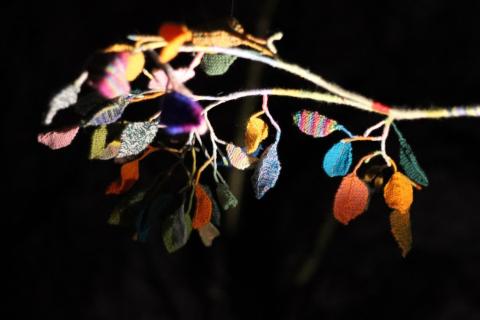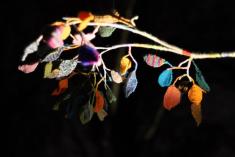Pahiatua Children
Documentary on Polish regugees
Documentary "Polish Children of Pahiatua - 70th Reunion"
This documentary provides some insights into the background for Juliet Laird's project in Gdańsk in 2013. The artist worked with several members of this Polish community in New Zealand.
The film was made during the celebrations of the 70th Reunion, which took place in November 2014. The anniversary events in Wellington, New Zealand were attended by over 130 “Pahiatua Children” from various parts of the world and more than 350 members of their families. Present at the ceremony were delegations of the Polish Sejm and Senate, Office of the War Veterans and the Ministry of Foreign Affairs. In addition to the Reunion, the film shows the effect the group of Children made on New Zealand culture and the place that the Polish community took in the society of New Zealand. The adoption of 733 Polish orphans by the government run by Peter Fraser is considered the cornerstone of bilateral relations between Poland and New Zealand. The Polish children and their caregivers lived for five years in the camp in Pahiatua, called Little Poland, where they were free to cultivate the Polish language and culture.
The film shows scenes from the Polish Festival in Wellington (October 25-28 last year) and the subsequent celebrations, including a trip to Pahiatua town, the laying of wreaths and flowers at a commemorative plaque at the Wellington Waterfront as well as on graves of the late Consul Kazimierz Wodzicki and his wife Maria and the former New Zealand Prime Minister Peter Fraser. There are also scenes from the Reunion Concert and a Holy Mass celebrated at the Sacred Heart Cathedral on November 2.
A common denominator for moving interviews with participants of the events of 70 years ago and the archival cinematography is a narrative of the Polish Ambassador, whose main message - beyond telling the history of Pahiatua Children – are the words of gratitude to the government of New Zealand.
The film was produced by CraftInc Films, which is co-owned by Wanda Lepionka, daughter of Pahiatua Children - Zdzisław and Halina Lepionka.
Juliette Laird (NZ), “Dreaming of summer” 2013. Site specific installation of knitting yarn, wire, lighting; dimensions variable. Sponsor: Switch Lighting NZ Ltd (LED spotlights). Lighting Assistant: Errol Anderson.
“Attaching hand-made branches to living trees as a metaphor for the way people find a way of making homes for themselves in new countries and cultures. By grafting themselves as one grafts one variety of plant onto another.”
Juliette Laird’s installation forms a bower of delicate glowing leaves in this place for a number of reasons. Like a cloud of memories, it is here to evoke the cycle of the seasons and the central role of plants and gardening in this part of the city. “Dreaming of summer” was conceived as a response to the historical Long Gardens in Gdańsk, harking back to the fruiting trees which once grew here; and it also refers to the community gardens located here that many will remember from the 1980s and 90s. The glowing canopy attached is also attached to these trees as a reminder that the neighbourhoods directly surrounding the park along with other parts of Gdańsk were re-settled three generations ago as Polish villagers ‘grafted’ themselves onto the place. Finally it is a memorial to the Polish diaspora through the particular relationship of the artist with Polish communities in New Zealand (in this, the 40th anniversary of diplomatic relations between Poland and New Zealand). On November 2nd, 1944, 733 Polish orphans arrived by ship in Wellington, were taken to a camp in the centre of the North Island and became famous as the “Children of Pahiatua” who went on to make their homes and lives around New Zealand. The bower contains 733 leaves plus an additional 80 knitted by Marysia Jaskiwig, one of those orphan children who arrived in New Zealand in 1944.
Juliette Laird imagined the children returning to the Eastern Polish countryside in their dreams at night; to a time before the Russian invasion and the years of exile and hardship, and before they lived in the foreign landscape of New Zealand.
Knitting was very important during the war years in New Zealand when no imported manufactured goods were available, and women were encouraged to knit (for the armed forces) as their contribution to the war effort. I imagined that some of the local mums in Pahiatua may have donated hand-knitted garments to the camp for the orphans. It seemed a perfect medium for this project. Like many other repetitive tasks, knitting was often done as a group activity, and its results sometimes combined in a single piece of work. Warm, woolly garments are associated with the collective caring of women for their families and communities, and indeed may provide comfort to the wearer as ‘transitional objects’ standing in for a caring adult.
Laird made contact with the Auckland Polish Association as she wanted to make sure that her version of their story was acceptable to the Polish community and not only did she get support and encouragement for the project, she also got help with the knitting; adding a valuable dimension to the installation: Working collaboratively pushes artists to articulate and tighten up what we do on the one hand, and enforces open-mindedness and a willingness to adapt on the other. This has been a very positive and important part of the project for me.
Juliette Laird's BLOG
Juliet Laird's project was presented within the programme of the 5th edition of NARRACJE – Installations and Interventions in Public Space: Unearthing Delights: Markets, Memories and Meetings curated by Rob Garrett (15-17 November 2013) Długie Ogrody / Long Gardens, Gdańsk, Poland.

